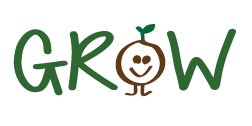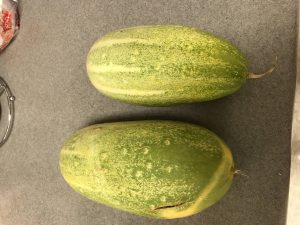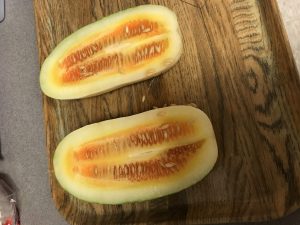Celebrating Culture in the Garden

Ms. Vang and her class during the H.U.G. garden breaking this spring.
GROW loves seeing all the different ways the community personalizes and utilizes our gardens. We recently sat down with PaHoua Vang, a preschool teacher at Hintgen Elementary to discuss how she is incorporating Hmong culture into the school’s garden. During the summer Ms. Vang teaches a Hmong immersion class that lasts four weeks and is available to preschool through first grade students within the La Crosse school district. These lessons feature traditional Hmong gardening and farming practices. Ms. Vang has taught these lessons now for three years and when GROW started a garden at Hintgen, she began to bring these lessons to her preschool students.
Ms. Vang was inspired to incorporate Hmong gardening lessons into the regular school year based on her own gardening experience and the high number of Hmong students at Hintgen Elementary that are able to relate to what she is teaching. Ms. Vang mentioned that growing up her life revolved around gardening, especially in the summer:
“I used to work in the pickle farms when I was a child, about the age of 5 and I also worked at organic farms. We would wake up early, 5 in the morning and go with my mom, so we could get a little money to buy school clothes. On top of working at the farms, my family also had our own garden about 1/4 of a football field.”
In addition, transitioning her Hmong immersion lessons into her preschool curriculum was an easy task considering students already spend time learning about gardening and farming. Students are taught about how in different parts of Hmong countries, many people grow their own food because they are unable to go to the grocery store for many reasons such as, they live to far away and do not have a vehicle to drive there or the walk there might take a whole day. Students also learn about Hmong family dynamics; everyone helps out in the garden. If children are not gardening, they help watch their younger siblings which is why in the past Hmong people have many children, so they can help out in the garden.
This summer Ms. Vang used a small portion of the Hintgen garden to grow traditional Hmong cucumbers known as Dib. Students were excited to help plant, weed, and harvest alongside Ms. Vang. Ms. Vang shared her favorite way to eat this tarte vegetable:
“One of my favorite cucumber dish is to wait until the cucumber ripens, so it gets orange and yellow on the inside just like a melon. It gets very tarty, and that’s when it tastes best. I would cut the dib in half, and scrape the melon with a spoon until I get close to the rind of the cucumber. I would add a little bit of water and sugar and eat it.”
The response of the students learning about Hmong culture has been positive. Ms. Vang strives to keep her classroom open and accepting of different people and cultures. She takes pride in maintaining a multicultural classroom and teaching students from a young age how to be accepting of other cultures.
We are excited to see how Ms. Vang uses the garden in upcoming seasons for her preschool and Hmong immersion students!
GROW Hamilton Garden Sign Reveal
Thank you to everyone who came out Thursday to the sign reveal of our newest garden the GROW Hamilton Garden! It was amazing to learn about all the work different community members put into building this garden. So many different people donated their time and resources to make it all possible. From making picnic tables and helping put in a water source to helping lay a stone pathway and donating plants, we are thankful for everything that went into this garden.
Exploring Our New Garden
Kindergarten and Third Grade students at Hamilton Elementary enjoyed spending their garden lesson exploring our newest garden, GROW Hamilton Garden. Kindergarteners were allowed to do some digging around the garden to see what plants and insects they could find. Students then were asked to draw a picture of what they found and if they found it above or below ground on the whiteboard to later discuss. The third graders task was a bit more challenging, they had to find one example of a root, fruit, stem, seeds, flower, and leaves. Students were up for the challenge and were able to learn the parts of a plant while completing it.







